You’ve been bitten by the dirt biking bug. The adrenaline rush of tearing through trails and kicking up dirt has you hooked. But before you take the plunge, you’ve got a big decision to make: pit bike vs dirt bike? Both offer thrills, but which one is right for you? This breakdown has everything you need to decide if you should go small with a pit bike or big with a dirt bike. We’ll compare price, power, maintenance and more so you can feel confident when it’s time to drop cash on your new ride. Strap in and get ready to go off-roading like a pro once you’ve got the inside scoop on pit bikes versus dirt bikes.
What is a Pit Bike?
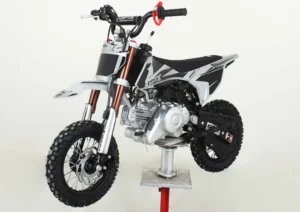
A pit bike is a small off-road motorcycle, originally used by mechanics and racers to navigate around the pits at motocross events. Today, pit bikes are popular with riders of all skill levels.
What sets a pit bike apart is its miniature size. We’re talking 125cc engines or less, compact frames, and small wheels – perfect for tight trails and tracks. Also read Pitster Pro 155 review
Affordable and Beginner-Friendly
If you’re new to dirt biking, a pit bike is a great way to start. They’re very budget-friendly, with many models under $1500. Parts and maintenance are also more affordable since everything is smaller. The small size and low power make pit bikes easy to handle, so you can build up your skills without feeling overwhelmed.
Customizable and Fun
Pit bikes are extremely customizable. You can outfit them with different tires, handlebars, exhausts, and more to suit your riding style. Their nimble handling and peppy powerbands make pit bikes a blast to ride. You’ll be popping wheelies and drifting around corners in no time! Want to know more? check this site.
Riding a pit bike lets you experience the thrill of motocross in a more compact, low-key way. If you’re looking for an affordable, beginner-friendly dirt bike that’s customizable and a total riot to ride, a pit bike could be the perfect choice for you. Why not give one a try? The fun factor might just surprise you!
What Is a Dirt Bike?
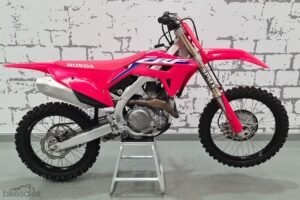
A dirt bike, also known as an off-road motorcycle, is designed specifically for riding on rough, unpaved terrain like trails, dirt roads, and motocross tracks. Unlike street motorcycles, dirt bikes have lightweight frames and lack equipment required for road use like turn signals, horns, and license plates.
Power and Performance
Dirt bikes are built for maximum power and performance off-road. They have powerful engines, durable suspension systems, knobby tires with deep treads, and a lightweight build that allows for quick acceleration and handling on uneven ground. The engine sizes range from 50cc for kids up to 500cc for experienced adult riders.
Riding Styles
There are many styles of dirt bike riding like motocross, enduro, and trail riding. Motocross bikes are designed for riding on closed dirt tracks with jumps and berms. Enduro bikes are better suited for long-distance riding over rough terrain. Trail bikes are versatile all-rounders good for most recreational riding. The differences are in the bike’s gearing, suspension, and other features. You’ll want to choose a bike suited to your preferred riding style.
Cost Considerations
Dirt bikes have a higher initial cost than street motorcycles due to their specialized nature. You’ll also need to invest in safety gear like a helmet, gloves, boots, goggles, and protective pads. Ongoing costs include frequent maintenance, tune-ups, and replacing knobby tires more often. However, dirt biking can be an exciting lifelong hobby if you’re willing to make the investment.
Does a dirt bike sound like the right choice for you? If you’re an adventure seeker who enjoys pushing the limits off-road, the thrill of dirt biking may just be worth every penny and more. Let the good times and mud flies!
Key Differences Between Pit Bikes and Dirt Bikes

Size and Power
The most obvious difference between pit bikes and dirt bikes is their size and engine power. Pit bikes typically have small 50-125cc engines, while most dirt bikes start at 125cc and go up to 450cc. The larger engine gives dirt bikes significantly more power and torque for high-speed riding on tracks and trails. Pit bikes are designed for low-speed riding in confined areas like motocross pits, with smaller frames and wheels to match.
Parts and Maintenance
The smaller size of pit bikes also means their parts are more compact and often less expensive. Tires, brakes, suspension components, and other parts are cheaper and easier to work on for pit bikes. Dirt bikes require higher-performance, competition-grade parts to handle the power and speeds they produce. Dirt bikes also generally require more frequent maintenance to keep them running well.
Cost
It’s no surprise that the smaller, less powerful pit bikes are typically the more affordable option. You can find a quality pit bike for under $2,000, while most dirt bikes start around $3,500 and go up from there for higher performance models. The lower cost of pit bikes makes them appealing for casual riders, especially beginners. Dirt bikes require a bigger budget, but offer a higher level of performance for experienced riders and competitors.
Terrain
The final key difference comes down to where each bike is meant to be ridden. Pit bikes are designed primarily for flat, open areas like tracks and fields, without the suspension travel for rough trails. Dirt bikes have long-travel suspension, knobby tires, and sturdier components that allow them to handle jumps, whoops, and technical single track terrain. So choose based on how aggressive your riding style is and the types of terrain you want to ride.
Whether you want an affordable bike for casual track days or a high-powered machine for competition, understanding these differences will help you choose between a pit bike or dirt bike. The right choice comes down to how much power and performance you need, how technical your riding will be, and budget. With the variety of options, there’s a perfect bike out there for every rider.
Pit Bike vs Dirt Bike: Price Comparison
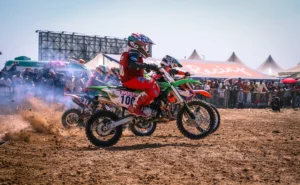
When it comes to cost, pit bikes are generally much more affordable than dirt bikes. You can often find a used pit bike for under $1,000, while a comparable dirt bike will usually start around $3,000 to $5,000 for a used model.
Initial Purchase Price
Pit bikes are designed to be inexpensive, so they typically come with smaller engines (50cc to 150cc) and more basic components to keep costs down. Dirt bikes, on the other hand, are built for high performance, so they feature larger, more powerful engines (125cc up to 450cc for recreational models) and higher-end parts that naturally cost more.
Maintenance and Repair
The smaller engines and simpler parts on pit bikes also mean lower maintenance and repair costs. An oil change or tune-up for a pit bike may only run you $30 to $50 versus $60 to $100 or more for a dirt bike. Replacing worn out or damaged components like tires, brakes, and suspension on a pit bike will also typically be 30-50% less than similar dirt bike parts.
Insurance and Registration
In many states, pit bikes under a certain CC rating (often 150cc to 250cc) do not require a motorcycle license, registration or insurance to operate legally. Dirt bikes, on the other hand, must be registered and insured like any other motor vehicle. The additional fees for registration, licensing, and insurance can add $200 to $500 or more per year to the overall cost of a dirt bike.
While dirt bikes offer significantly more power and performance, pit bikes win out when it comes to budget-friendliness. If you’re looking for an inexpensive toy to ride around the yard or neighborhood, a pit bike could be a great, low-cost option. But if you need a bike that can handle more demanding off-road terrain, the higher price tag of a dirt bike is probably worth the investment.
Pit Bike vs Dirt Bike: Performance and Capabilities
Engine Power
Pit bikes typically have lower engine capacities, ranging from 50cc to 150cc. These small engines mean pit bikes have less power and torque compared to the larger engines of dirt bikes. Pit bikes can reach top speeds of 30 to 50 mph, while dirt bikes with 250cc engines or more can reach 60 mph or higher.
Handling and Suspension
The smaller wheels and frames of pit bikes, combined with less advanced suspension, make them more difficult to handle on rough terrain compared to dirt bikes. Pit bikes are best suited for flat, even surfaces like tracks, while dirt bikes can handle trails and jumps.
Maintenance Requirements
Pit bikes are more affordable and require less maintenance than dirt bikes. Their small engines and basic designs mean lower costs for oil changes, tune-ups, and part replacements. Dirt bikes have higher performance engines and components that need more frequent maintenance to keep running well.
Riding Experience
Pit bikes are ideal for beginners and kids learning how to ride, while dirt bikes are better suited for more experienced riders. The lower power and simpler design of pit bikes make them easy to control, even at lower skill levels. Dirt bikes require an advanced skill set to handle higher speeds and more difficult trails.
If you’re looking for recreational riding at lower speeds, a pit bike is probably your best choice. But if you want to ride more aggressively on dirt trails, a dirt bike will give you the power and performance you need. Consider your riding experience, needs, and budget to determine if a pit bike or dirt bike is right for you.
Maintenance and Repair Considerations
Cleaning and Inspection
To keep your pit bike or dirt bike in good working order, frequent cleaning and inspections are a must. After each ride, thoroughly wash your bike to remove built-up dirt and debris. Pay extra attention to the air filter, carburetor, brakes, and sprockets. Check for any fluid leaks or damage to the bike’s components like the swingarm, frame, forks or wheels. Performing regular maintenance like oil changes, filter replacements and lubricating the chain will prevent major issues down the road.
Wheel Inspection
The wheels on your bike experience a lot of stress from riding over rough terrain. Before each ride, spin each wheel to ensure the rim is true and check that the spokes are tight. Investing in a spoke torque wrench allows you to tighten the spokes to the proper tension. Loose or damaged spokes can be dangerous if they catch on obstacles or cause the wheel to warp.
Additional Tips
Some other useful tips for keeping your pit bike or dirt bike in working order:
- Adjust and lubricate the chain as needed. A loose or dry chain can slip or snap.
- Check tire pressure and tread before riding. Low pressure or worn treads reduce traction and handling.
- Test the brakes to ensure they are functioning properly with good pad material remaining.
- Perform an annual tune-up to catch any major issues. A trained mechanic can spot problems you might miss.
- Keep a well-stocked tool kit for roadside issues. Essentials like wrenches, screwdrivers, pliers and a tire repair kit can get you out of a jam.
- Consider investing in protective gear like frame sliders, radiator guards and disk protectors. They help prevent damage from drops or accidents.
Following a regular maintenance schedule for your bike is the key to maximizing performance and avoiding unwanted repair costs. While pit bikes and dirt bikes are built tough, they still require care and upkeep. Keep your ride dialed and it will provide miles of enjoyment out on the trails or track.
Where to Ride Pit Bikes vs Dirt Bikes
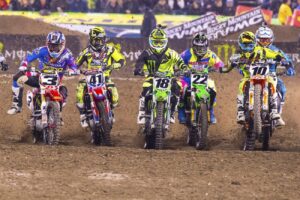
Pit bikes are designed for stunt riding and smaller areas, while dirt bikes can handle more rugged terrain. The size and power of each bike dictates where they can be safely ridden.
Pit Bikes: Smaller Areas
Since pit bikes are smaller, they are best suited for limited spaces like pits, trails, paths or small backyards. Their diminutive size means they can’t handle rough or uneven ground as well as a dirt bike. However, their smaller wheels and lighter frames make them more maneuverable for doing tricks and stunts in confined areas. Pit bikes are a great way to practice and have fun without needing a large open space.
Dirt Bikes: Rugged Terrain
Dirt bikes are built for off-road riding in areas like motocross tracks, trails, hills and open fields. Their larger size, knobby tires and higher ground clearance allow them to traverse rocky, muddy and uneven terrain that would stop a pit bike in its tracks. Dirt bikes also have more powerful engines, so they can reach higher speeds for thrill-seeking rides. However, their size means they require more space and aren’t ideal for stunt riding in smaller areas.
In the end, the type of riding you want to do should determine which bike is right for you. If you’re interested in doing tricks and stunts in limited spaces, a pit bike is probably your best choice. But if you want to go off-roading on rough terrain, a dirt bike will suit you far better. Either way, always be sure to wear proper safety gear and follow the rules of the road to ensure an enjoyable riding experience.
Choosing the Right Bike for You
First, consider your current fitness level and riding skills. If you’re new to riding or still getting into shape, start with a pit bike. These lightweight bikes have smaller engines (50-140cc) that are easier to handle. Once you build up your endurance and skills, you can move up to a dirt bike.
Next, determine how you want to ride. If you plan to ride mostly on dirt trails, a dirt bike is ideal. They have knobby tires and long-travel suspension for handling rough terrain. For riding on tracks or doing motocross, a dirt bike is also the better choice. If you’ll be riding on paved roads, consider a dual-sport bike. They have tires that can handle both dirt and pavement.
You should also choose a bike that properly fits your body size. If you’re on the shorter side, look for a bike with a low seat height, like a pit bike. Taller riders will want a bike with a higher seat, like most dirt bikes. Make sure you can comfortably reach the ground with your toes while straddling the bike. Handlebars and levers should also be within easy reach. An incorrectly sized bike can be difficult and unsafe to operate.
Other factors to weigh include cost, maintenance, and available parts. Pit bikes and smaller dirt bikes generally cost less and require less maintenance. Replacement parts are also usually lower priced and easier to find. Larger dirt bikes offer more power but at a higher cost, both to purchase and maintain.
Whether you choose a pit bike or dirt bike, the most important thing is that you select a motorcycle suited to your needs and skill level. Start small and work your way up as your experience grows. That way you can continue enjoying this exciting motorsport for years to come!
FAQ – Pit Bike vs Dirt Bike: Your Top Questions Answered
So you want to get into off-road riding, but can’t decide between a pit bike or dirt bike? We’ve got the answers to your most frequently asked questions.
What’s the difference in size and power?
Pit bikes are smaller in size with lower power, usually around 50-125cc. They have raised seats and small tires, making them easy to maneuver. Dirt bikes are bigger, faster, and more powerful, typically 250cc or more. They can reach higher speeds for trail riding and have larger tires for traction on rough terrain.
Which one is less expensive?
If budget is a concern, pit bikes are typically cheaper. You can find a quality pit bike for under $2,000. Dirt bikes start around $3,500 and go up from there depending on the make, model, and engine size. Pit bikes are also less expensive to maintain since parts are smaller and less complex.
Can I ride them on public roads or tracks?
In most places, neither pit bikes nor dirt bikes are street legal. They are designed for off-road use only on private property or designated trails and tracks. Some dirt bikes can be converted to dual-sport bikes for street use, but it requires additional equipment like headlights, turn signals, license plate holder, and may require an additional license or registration.
Do I need any special licenses or certifications?
For recreational riding on private property or designated off-road areas, no special license is required for either pit bikes or dirt bikes. However, if you plan to ride on public trails, you will need an off-road vehicle permit or sticker in most places. For motorcross or dirt track riding, you will need a membership to the track which typically involves a waiver for liability.
What kind of maintenance do they require?
Both pit bikes and dirt bikes require frequent maintenance like oil changes, air filter cleaning or replacement, chain lubrication or replacement, and tune-ups. Dirt bikes with larger engines typically need more maintenance. It’s a good idea to service your bike every 3-5 rides to keep it in safe working condition and extend the life of components.
Does this help clarify the differences between these popular off-road bikes? Let me know if you have any other questions!
Conclusion
So there you have it – the main differences between pit bikes and dirt bikes broken down. Now you can make an informed decision about which one is better suited for your needs and budget. Just remember, while pit bikes are often cheaper and easier to maintain, dirt bikes offer more power and versatility for hardcore off-roading. Whichever you choose, always wear protective gear, get proper training, and respect the machine. Ride safe and have an absolute blast! At the end of the day, two wheels and a motor is two wheels and a motor. Get out there and start making memories on the machine of your dreams!
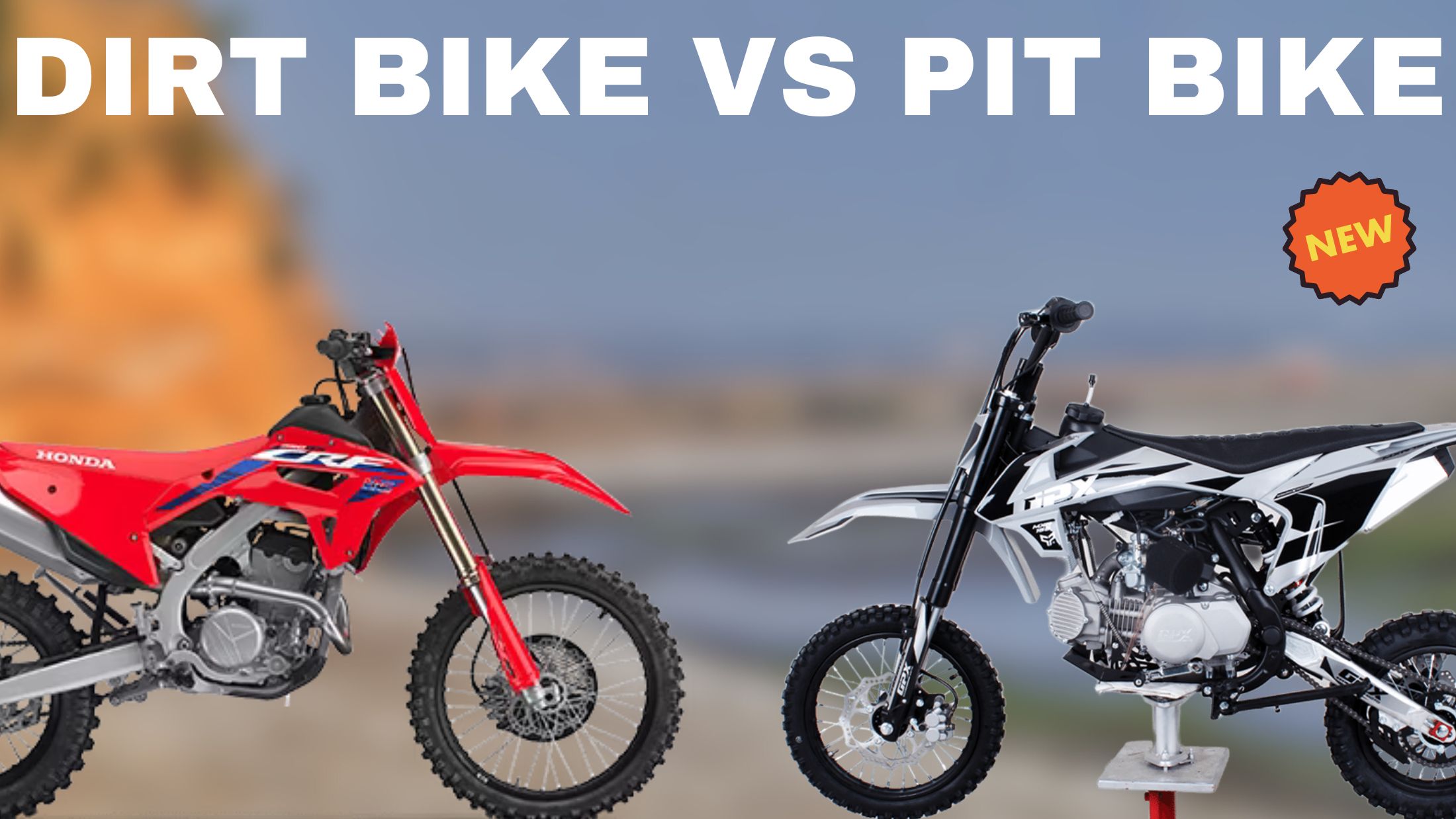
3 thoughts on “Pit Bike vs Dirt Bike: How to Choose the Right One for You”